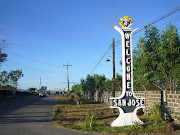
According to Chinese calendar, 2011 is the year of the Rabbit and may all the Filipino here and around the globe lick our wounds brought about by the war-torn year of the Tiger. May 2011 become a year of magical persuasion rather than sheer or ferocious force and help us value things and people who were through the years, are still with us today while others just died, faded or simply went away.
My mother, more than 70 years of age, is from far-away Zambales and whenever she remembers the place where she was born and grew up, in her memory come a vivid picture of this big and wheeled “rabbit”. Yes, she’s referring to one of the buses of the Philippine Rabbit Bus Company (PRBC) operating to and from Manila and selected provinces in northern Luzon along strategic routes. To my mother’s memory, the Philippine Rabbit is a symbol of a new life because it was the first transportation that helped her find her luck here in San Jose and eventually met my late father and started a family of their own. The Philippine Rabbit is still alive and kicking through the years.
By the way, people say (perhaps from an urban legend), the name Philippine Rabbit was named by accident. They say that the first of its buses were mistakenly painted “Philippine Rabbit” instead of the intended “Philippine Rapid.” The PRBC went into dark times in the 90’s when its workers led a strike which resulted to temporary suspension of its operations. With changes in corporate decisions and management strategies, the company was able to survive until today though its area of coverage was narrowed. Indeed, it continues to strive to be competitive with leading and mushrooming bus companies in terms of number of units and providing quality and reliable service to its patrons, I doubt if this “rabbit” could regain its former status in the past. But the effort of the Philippine Rabbit to stay alive is still there as long as there are people who patronize and cherish them.
Just like how we, her children, cherished our mother.
We had a sari-sari store when I was a kid and this “rabbit” made me and my playmates salivate a lot. It is actually our favorite candy. It was the most popular candy during our time. The White Rabbit candy was born in Shanghai, China in 1943. In fact, in 1972, Premier Zhou Enlai even used White Rabbit candies as a gift to American president Richard Nixon when the latter visited China. Here in the Philippines, its distributor is Cheng Ban Yek & Co.
But I remember a classmate who was taken to a doctor because of a certain sickness. His eyes, finger and fingernails turned yellow and he was yellow all over. From then on, each time she goes to school, he carried a bagful of White Rabbit candy inside his lunch pack. The doctor, he said, told him to munch a lot of White Rabbit. I am still wondering to this day: Is the candy really cured him from jaundice or other diseases related to it? (To my FB friends out there who are in medical profession, please enlighten me on this.)
Just recently, in July 2007, the White Rabbit was banned for distribution within the country after the Bureau of Food and Drugs (BFAD) tested it for formaldehyde, the substance that is used for preserving corpses. The Chinese candy-maker protested that BFAD was "extremely irresponsible" for not confirming the authenticity of the test products and further added that their product was target of confectionary counterfeiting in Asia. After submitting their samples from their own factory to an internationally certified laboratory in Shanghai, it received clearance of any formaldehyde tainting.
Nothing really escapes politics. Even sweet and seemingly innocent things like candies…
-----
(Photo : Google Image)






No comments:
Post a Comment